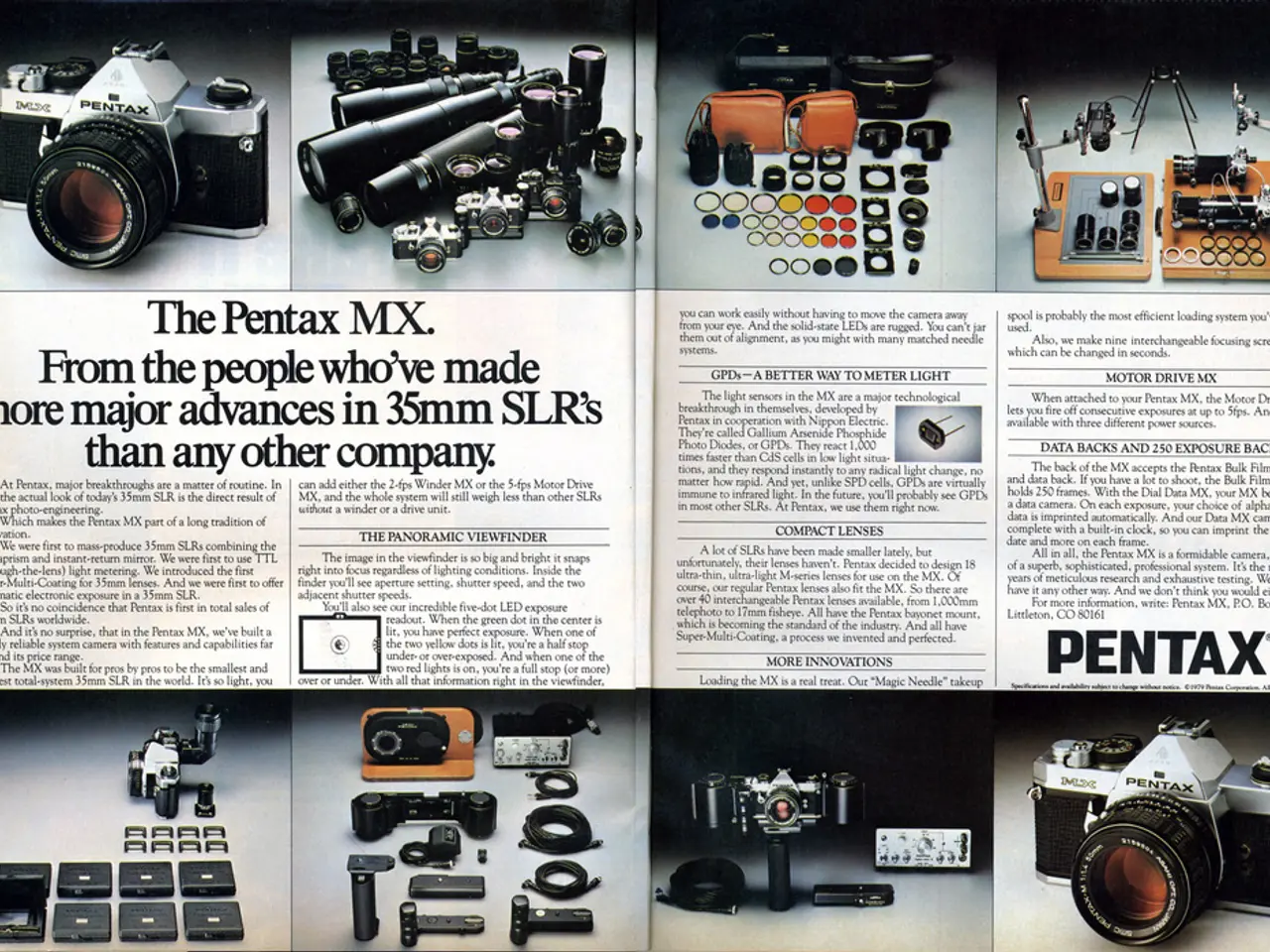Ricoh Mirai purchase - Recently acquired the outrageous bridge camera resembling Batman's equipment!
The Ricoh Mirai, meaning "future" in Japanese, was a groundbreaking bridge camera developed by Ricoh in the late 1980s. With a budget of approximately ¥2 billion (around $16 million or £10 million), the Mirai represented a significant investment in camera technology.
Launched in 1988, the Mirai boasted a futuristic design and an innovative approach to camera handling. Unlike typical compact cameras of its time, the Mirai featured an eye-level optical viewfinder, allowing users to view the subject through the lens, similar to an SLR. It had a modest zoom range with a built-in 35-135mm f/4.2-5.5 lens, and an optional teleconverter to extend zoom to 200mm.
In terms of features, the camera provided readings of shutter speed and aperture through the viewfinder but lacked an aperture priority exposure mode. Users had to rely on program shift and exposure compensation for creative control. The autofocus was accurate for static subjects but slow and outdated compared to modern standards, requiring manual focusing to be competitive in speed. The handling received mixed reviews, with ergonomic issues such as difficulty when rotating the pistol grip for vertical shots.
Contemporary reviews acknowledge the Mirai's pioneering design as a bridge camera blending features of compact cameras and SLRs. However, the autofocus and handling show limitations by today's standards. A potential modern iteration of a big sensor bridge camera could feature a Micro Four Thirds sensor, offering improved performance in both areas.
The Mirai played a role in the early popularization of "bridge" cameras, alongside other contemporaries like the Yashica Samurai X3.0 and later Canon Photura, which adopted similar one-hand operation designs but with technical improvements such as smart autofocus.
Today, the Ricoh Mirai remains a notable milestone in camera history for blending different camera styles. It is often sought after by collectors and photography enthusiasts, with prices on eBay starting from under $25 / £20. Although it may not meet today's performance standards, the Mirai's innovative design and historical significance make it a valuable addition to any camera collection.
- With advancements in technology, modern mirrorless cameras now boast features like autofocus and video recording that the Ricoh Mirai lacked.
- The sensor in the Ricoh Mirai was not as high-quality as those found in today's camera sensors, impacting the camera's overall performance.
- In the world of entertainment and lifestyle, the Ricoh Mirai is a fascinating relic of the past, showcasing the evolution of photography technology.
- The Ricoh Mirai's lens, while modest for its time, cannot compete with the wide range and quality offered by lenses in today's market.
- The camera's ISO performance was satisfactory, but not exceptional, when compared to contemporary and modern cameras.
- The Ricoh Mirai marked a turning point in photography, bridging the gap between compact cameras and SLRs, paving the way for more advanced bridge cameras like drones with built-in cameras.
- In the realm of news and review, the Ricoh Mirai is lauded for its pioneering role in the development of bridge cameras, despite its limitations.
- The Ricoh Mirai, with its innovative design and technology, opened up new opportunities for portrait photography and other creative tasks for amateur photographers.
- Today, the Ricoh Mirai's futuristic approach to camera handling, combined with its historical significance, makes it a desirable collectible for tech enthusiasts and photography hobbyists alike.




